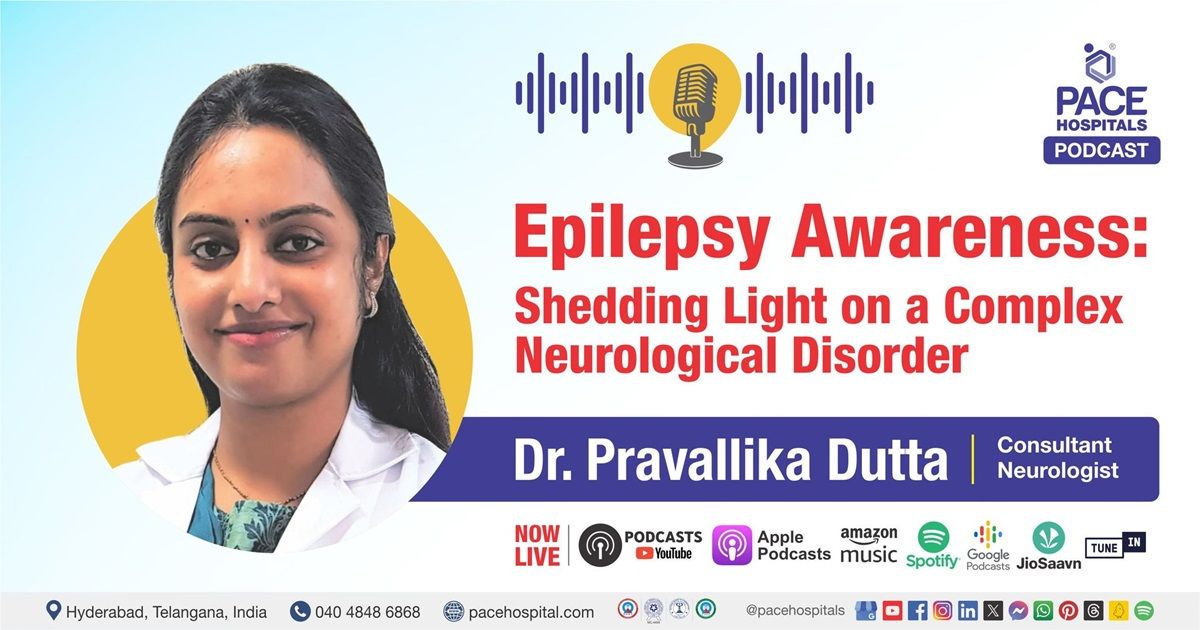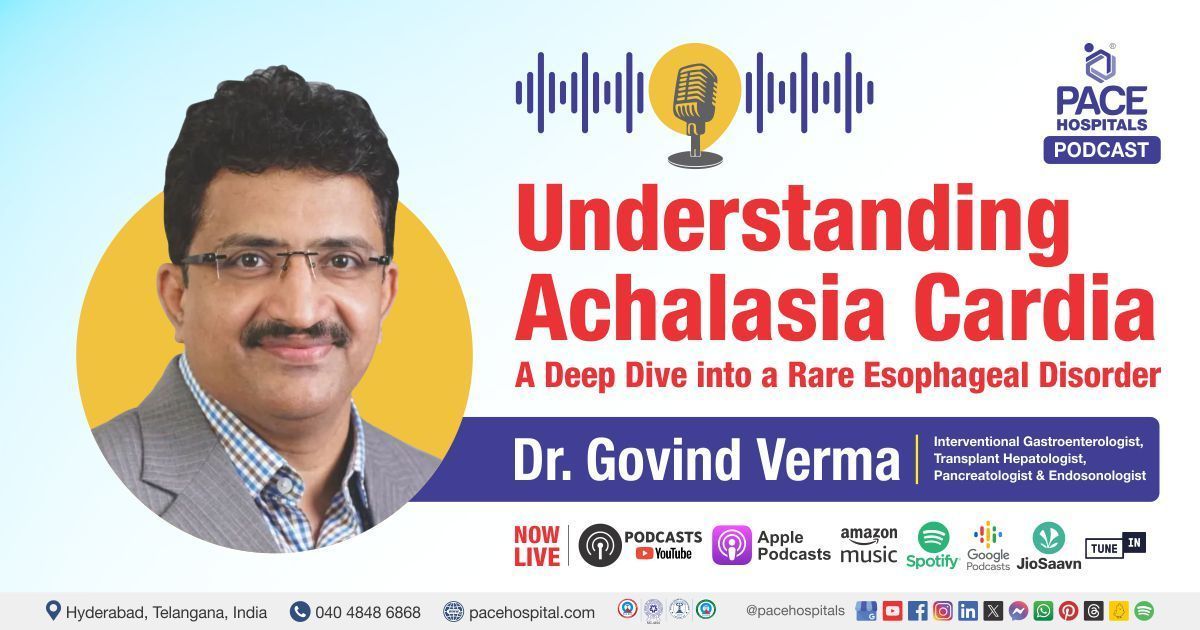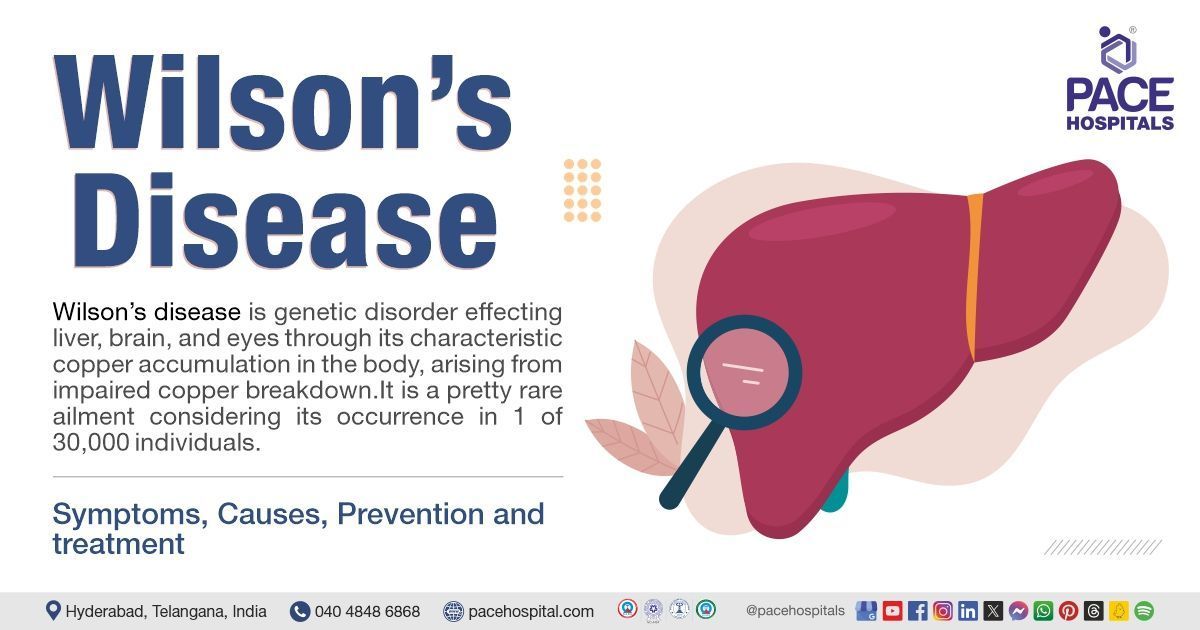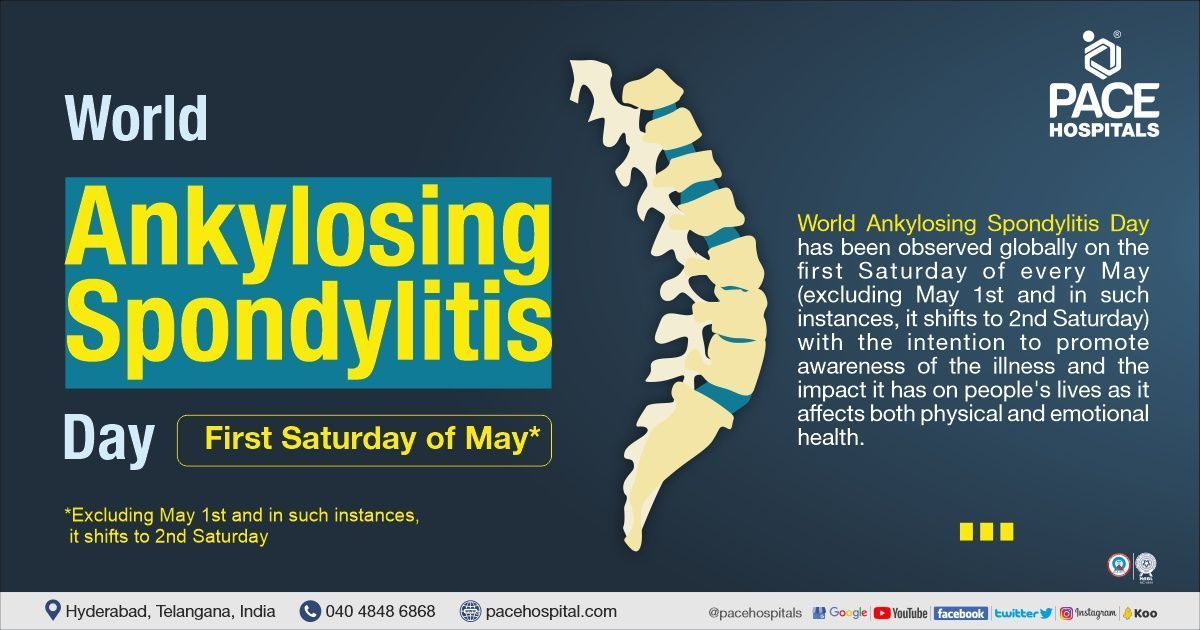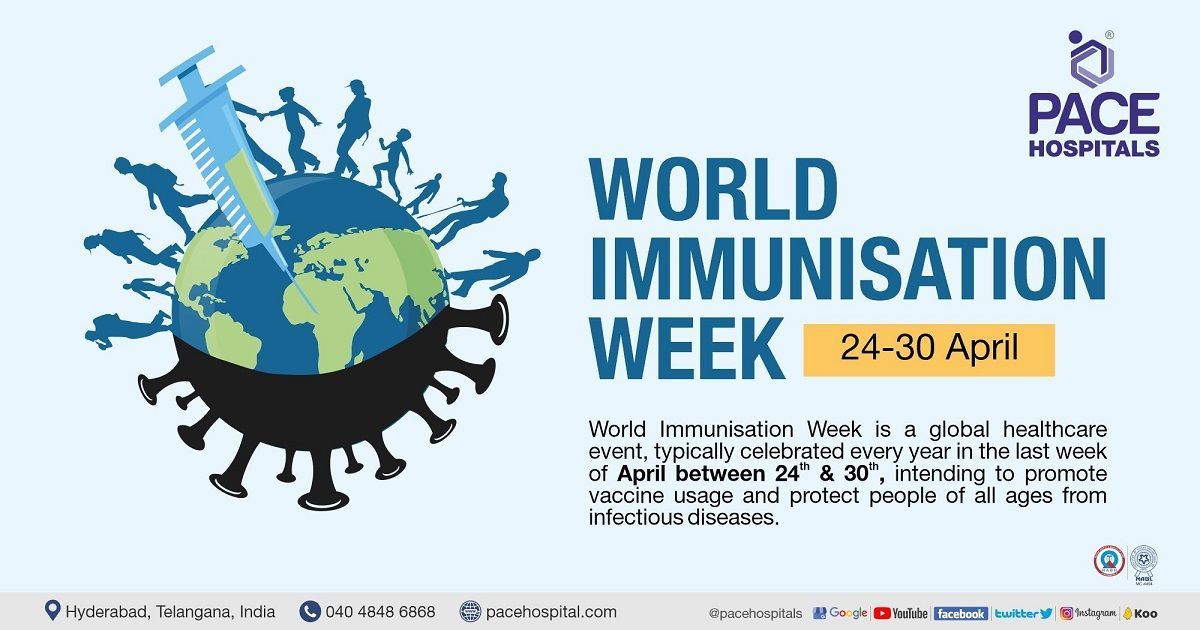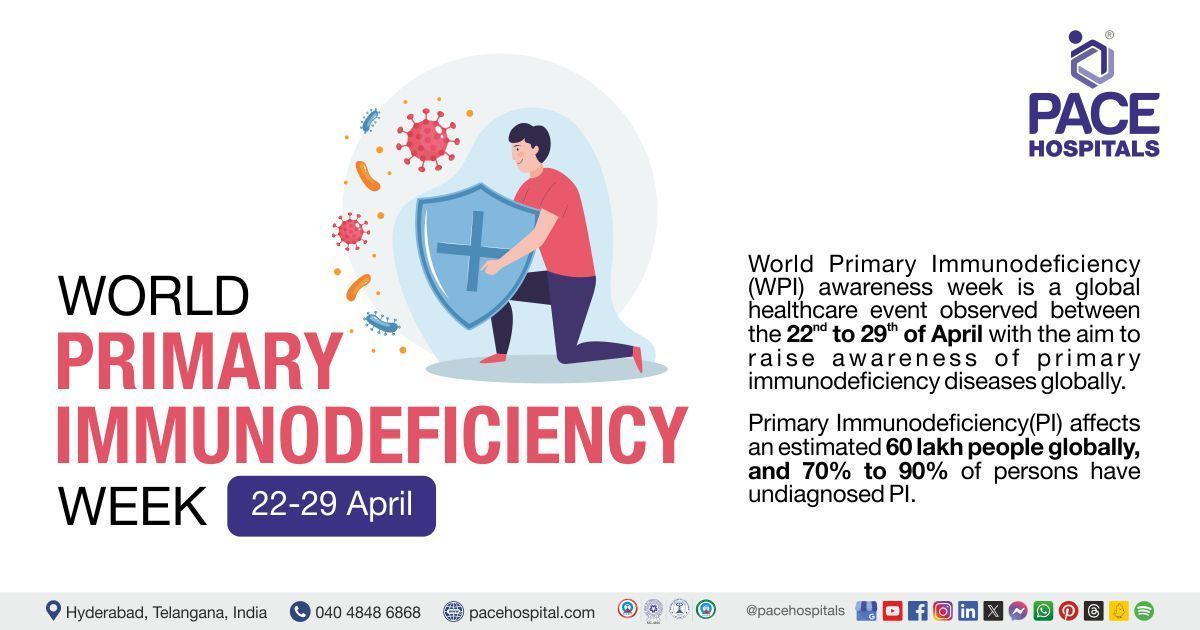Epilepsy Awareness - Shedding Light on a Complex Neurological Disorder
Listen to
Epilepsy is a neurological condition identified by recurring seizures, which are quick, uncontrollable electrical disruptions in the brain. One of the most common fallacies regarding epilepsy is that it is invariably accompanied by convulsions or falls to the ground. Seizures can take many forms, including staring spells, short confusion, muscle spasms, and even minor movements such as lip-smacking or repetitive hand gestures.
Epilepsy is a challenging and misunderstood disorder that has a tremendous impact on the lives of individuals and families. In this episode of epilepsy podcast we will know that despite the myths and misconceptions, there is a story of tenacity, overcoming obstacles, and finding hope.
Join the
PACE Hospitals Podcast with
Dr. Pravallika Dutta – consultant neurologist at PACE Hospitals, Hitech City, Hyderabad, India, to unravel the mysteries of epilepsy, including its different forms, therapies, and effects on individuals and their families.
-
Transcript
Host: Hello and Welcome to PACE Hospitals Podcast, today we unravel the mysteries surrounding epilepsy, exploring its various forms, treatments, and the impact it has on individuals and their families.
Joining us today Dr Pravallika Dutta - Consultant Neurologist having wide expertise in treating and managing epilepsy. In today’s episode she would like to explore the multifaceted world of epilepsy, uncovering truths, and fostering understanding along the way.
Dr Pravallika Dutta thank you for joining us at PACE Hospitals, Hitech City..
Doctor: Thank you for inviting me today; I would like to embark on a quest to unravel the mysteries surrounding this complex neurological disorder and also I would like to delve deep into the world of seizures, dispelling myths, and shedding light on the realities of living with epilepsy.
Host: Dr Pravallika Dutta thank you for joining us lets understand exactly what is epilepsy and seizures?
Doctor: So, epilepsy is nothing but more than two unprovoked seizures which occur 24 hours apart. So apart from that, the recent definition has classified epilepsy as even one unprovoked seizure which can occur, and the recurrence risk of the second seizure being more than 60% or any epileptic genetic disorder, epileptic syndrome.
So in this context, if we come to the definition, what is provoked and unprovoked? Provoked implies nothing but any inciting event, like either a brain stroke or any alteration in the sodium levels or glucose levels. So any inciting activity is provoked in the absence of any inciting activity that is called unprovoked. So this is Caesar and this is epilepsy.
Host: What is the different classification of seizures?
Doctor: Broadly, seizures are classified into two types, focal seizures and generalized seizures, among which focal seizures, so what are focal seizures. So, focal seizures are nothing, but they are because of the abnormal electrical activity generated in one part of the brain, that is, one part of the cerebral hemisphere, which results in the abnormal seizures.
And focal seizures are further classified based on the loss of consciousness. So there can be either focal seizures with impaired awareness or focal seizures without impaired awareness. So in these focal seizures, what usually happens is suddenly there can be a behavioral arrest, patient will be talking and suddenly will become calm, or he can perceive sensations of altered smell, altered taste, or there can be any recollection of old memories. So these are the common features seen with focal seizures with impaired awareness.
Whereas focal seizures without impaired awareness, it can be of motor, that is, presence of involuntary jerky movements of one hand or one leg, or facial twitching involving only one part of the body. So sometimes they can be associated with automatism.
Host: What are the causes of epilepsy?
Doctor: So there are varied etiologies of epilepsies, most common being a metabolic causes.Whenever the patient presents with the seizures when he comes to the hospital, the first thing which we check his GRB is glucose levels and sodium levels. So these are the most common causes, metabolic causes.
Apart from that, any alteration in the electrolytes like calcium, low calcium or high calcium or low sodium or high sodium alteration in the glucose levels, any of these can lead to metabolic seizures.
Apart from that, there are many other causes like infectious causes, any CN's infections, brain infections like HIV infections, any viral infections, most commonly dengue infections or herpes simplex, viral encephalitis or most common causes which we come across.
A patient presenting with seizure is a neurocystic sarcosis. Parasitic infections, tuberculomas we call they are granulomas or it can be tb because of tuberculosis too meningitis secondary to tb or granulomas secondary to tb. So apart from infections, we have other causes like any head trauma, any injury to the head or any stroke, brain stroke, any tumors, brain tumors all these are common causes of epilepsies.
Host: Can epilepsy be a genetic problem?
Doctor: Most of the childhood epilepsies are having some genetic causes like idiopathic generalized epilepsies or progressive myoclonic epilepsies. They are related to multiple genes or single genes in some cases. And most of the epilepsies, these epilepsies run in families.
Host: What are the primary risk factors that contribute to the recurrence of seizures in individuals with epilepsy?
Doctor: So most common recurrence risk factors are first thing being any previous neurological insult, like any trauma to the brain or any tumor or any stroke, or it can be cerebral palsy, any developmental disorder, any birth defect. This is the most important recurrence recovery factor.
Apart from that, any abnormalities on the test like EEG is the most common test which is used. So any abnormalities on the EEG or multiple types of scissors in the same child or in the same individual can also lead to increased recurrence.
Apart from that, there is a condition called torts palsy, specially seen with focal scissors, wherein the scissors starts in one part of the hand and it marches to the other parts and finally the that limb can be paralyzed i,e., it does not move or work. So torch palsy is also another recurrence risk factor. So usually these epilepsies can be seen in all the age groups, but most commonly seen in children and there is equal risk in both males and females.
Host: What are the most common complications of epilepsy?
Doctor: So an epilepsy patient can fall into many complications. First thing, an epilepsy patient can have a seizure and he can fall to the ground. If injure his head or break his bone, any fracture can happen. That is one of the complications.
Second is drowning. Epilepsy patients are not allowed to swim. They are prevented from swimming because they have 13 to 19 times increased risk of drowning. Another being pregnancy complications. A patient with epilepsy can have complications during pregnancy, but it is definitely manageable.
So the patient, an epileptic patient who has become pregnant should be under the guidance of the neurologist so that adequate care can be taken during the time of pregnancy and on top of it, there is lot of stigma around these seizures and fits, which can lead to many of the emotional disturbances like depression, anxiety, psychosis.
All these are common emotional disturbances. So these are some of the common complications associated with the epilepsy. The other two dreadful complications which are associated with epilepsy are status epilepticus and SuDEP. So what is status epilepticus?
Status epilepticus is nothing, but when a patient throws fits and he continues to throw spits for more than five minutes, then the patient might lead then that might lead to permanent brain damage and it can also lead to death.
So it is very important to identify a patient who is throwing continuous fits. So it can happen for more than five minutes or the patient is having frequent episodes of seizures with very less time intervals between each episode of seizure.So these complications have to be identified and immediately the patient has to be shifted to the hospital to initiate the treatment with injections because it can lead to permanent brain damage and as well as the death of the patient.
Second most dreadful complication of epilepsy is Sudep. SuDEP is nothing but sudden unexpected death in an epilepsy patient. So it can happen in 1% of the patients with epilepsy. The sudden death can occur because of the respiratory arrest or any cardiac arrest.
It is most commonly seen in patients who have generalized tonic clonic seizures and also who have seizures or epilepsy, which is difficult to treat. So it is very important to identify this group of patients and it is important to explain the risk of seizures and it is important for the early initiation of treatment in any epilepsy patient.
Host: How do you diagnose for epilepsy?
Doctor: Neurological investigations which help in the diagnosis of epilepsy and it is important to diagnose epilepsy because it helps and gives the clue to what kind of treatment is needed and it is very important to identify what is the cause for the epilepsy that appropriate treatment can be given to the patient.
So we have investigations like electroencephalogram, that is EEG. EEG is nothing but very similar to ECG. Here ECG we put a chest leads, whereas in EEG we put scalp leads around. Few leads are placed which cover the entire topography of the brain, entire circumference of the brain, so that these electrodes will pick up the abnormal brain signals and the waves are observed.
Usually the brain waves are having normal patterns. If there is any deviation from these normal patterns or if we have any abnormal electrical discharges, it can be easily picked up through EEG. So EEG not only identifies these abnormal discharges but it also identifies the locality from which part of the brain is it coming from the anterior part of the brain or posterior part of the brain or lateral part of the brain that is frontal, parietal, temporal f rom which part of the brain lobes the abnormal epileptogenic activity is originating.
We can get to know and we can plan any epileptic surgery accordingly. It also, and certain patents also give us the idea about which type of genetic epilepsy it is like. For example, as I have already spoken, absent seizures usually have this typical pattern of 3 /second spike and wave discharges, which is classical EEG abnormality scene So apart from that important investigations which we have are imaging, that is CT brain, MRI brain and some functional imaging.
So CT brain mainly identifies any calcifications or calcified granulomas or any major defects, any bleed, any structural malformations like arteriovenous malformations. All these can be identified on CT and on MRI. Also any birth defects, any ABM's, any cavernomas can be identified by MRI.
Then comes the role of functional imaging what is functional imaging? So functional imaging plays a role in identifying the exact locality from where the epileptogenic focus. Epileptogenic focus is from where the seizure activity is generated in the brain and also it helps in identifying the normal brain, normal part of the brain so that that part is saved from resecting during the epileptic surgery like there are various functional imaging scans, one being spec wherein a radioactive dye is injected and the flow, the blood flow to the brain is observed.
The other being PET scan wherein a radioactive agent is indicted and the metabolism on the brain parenchyma is observed. Usually the area from where the seizures originate. They are having low activity of this radioactive substance. So there are various imaging modalities which help in identifying the exact locality from where the seizures are generated.
Host: What are the most common treatment options for epilepsy?
Doctor: We have medical management and surgical management coming to medical management. There are more than 20 types of medications available for treating seizures. Usually most of the patients, 80% of the patients respond to one anti seizure medication. That is anti epileptic medications. They act on various channels like sodium channels, potassium channels at various receptor levels in the brain cells to control the abnormal electrical current generated in the brain so that the Czech can be under control, seizures threshold can be lowered.
Most of the patients respond to one anti-seizure medication. So when patients are not responding to more than two or more than one anti-seizure medications, or it is taking like if they are not seizure free for more than two years, then they are categorized as refractory epilepsy patients. So these patients are usually offered surgical treatment options and moreover, choosing an antiepileptic medication is very, very important.
So some patients might tolerate to some form of side effect profile, others might not and it is very important to choose certain medications in pregnancy, especially in female patients, female epileptic patients with pregnancy, because that can lead to many birth defects. So there are many, many medications which have good safety profile. There are newer drugs which have come up with a very effective and safety side effect profile.
Host: What are the surgical treatments available for epilepsy?
Doctor: When a patient is refractory or not responding to medical therapy? There are various surgical options available for the patient. So that is removing one part of the lobe from where the epileptic seizures are generated or removing only that particular lesion, that is lesionectomy or lobectomy. These are the major surgical options which are commonly performed.
For example, there is an entity called temporal lobe epilepsy, mesial temporal sclerosis, wherein we remove hippocampus so that hippocampus is remote for any refractory seizures, so that the patient can be seizure free.
So there can be other surgeries like disconnection surgeries, wherein the connections or the circuits between the brain cells are disconnected or resection of one part of the brain or a part of the lobe can be done to control seizures.
So apart from this, there are advanced therapies, neuromodulatory therapies like vagus nerve stimulation, VNS, DBS, and there is a therapy called ketogenic diet. So in vagus nerve stimulation there we place electrodes connecting from the brain to the neck, and we place a pacemaker kind of thing in the chest, and we stimulate the pacemaker in the chest so that the brain cells which are connecting from the brain to the vagus nerve in the neck are stimulated.
So this will help almost in reducing 2020% to 40% of the seizure burden is reduced with this kind of modality another thing is deep brain stimulation, which is almost similar to this, wherein electrodes are placed in the brain, especially in a structure called thalamus, and a pacemaker is placed in the chest and the currents are adjusted in such a way so that seizers can be controlled. These are the newer therapies which are still in research and most of the there are few patients who have undergone these therapies and have been seizure free too.
Host: What are some key do's and don'ts for someone who has been diagnosed with epilepsy?
Doctor: Whenever we see a patient throwing fits, first thing is we should assure them and tell them not to panic, and not to panic, not only to the patient, but also to the caregivers. Then the second thing which we have to do is take the patient to a safe place, put him on the flat surface and make him lie down on left sided position, predominantly mainly left sided position.
And then third thing is we have to remove any sharp objects or any sharp metal rods around the patient or at the site of the patient where the patient is throwing fits, because these can cause injury to the body and they can lead to fractures or any soft tissue injuries when put in the site.
Third thing is we have to remove any objects in the mouth of the patient because there is high risk of aspiration to the lungs. So the patient who is throwing fits can become unconscious. He is not in senses to control his reflexes, so any objects in the mouth or any food particles in the mouth have to be removed.
Third thing is you have to loosen the clothes around the neck, give adequate space, adequate room for the patient to breathe. So once the patient stops seizing, then patient should be assured and now comes the decision whether the patient has to be taken to the hospital or not.
So usually if the patient remains confused for a very long time, even after stopping seizure, or if the patient throws seizure continuously for more than five minutes, then the patient has to be immediately shifted to the hospital. So these are the two main indications when you have to call the ambulance and shift the patient to the hospital.
Host: So, doctor, can you suggest some preventive tips to manage epilepsy?
Doctor: First thing is avoiding any alcohol consumption or smoking. Second thing is a patient should get adequate sleep as sleeplessness or sleep deprived state can provoke seizures and managing stress, eating healthy, having balanced diet.
Then next comes avoiding activities like driving or swimming which can lead to hazardous problems, so even if and the patient is not allowed to cook all by herself as it can lead to fire injuries if the patient throws fits at that time and also if the patient is going to washroom, the washroom door has to has to be not locked.
Someone has to stay behind when the kids are like if the child is having seizure, that child is not supposed to play in areas like terrorists and all because there are high chances that the child can throw off it and fall from the terrorists, so we have to take these adequate measures in patients with epilepsy.
Host: Thank you Dr Pravallika Dutta for sharing crucial information regarding the epilepsy to our listeners.
Doctor: I hope this information can be valuable for the listeners that this condition presents challenges; it doesn't define those who live with it. With understanding, support, and ongoing research, we can continue to break down barriers and improve the lives of individuals affected by epilepsy.
Host: If any of you have any further questions regarding epilepsy please don’t hesitate to consult a neurologist and let’s remember that knowledge is the key to dispelling fear and stigma surrounding epilepsy. By understanding and supporting those living with epilepsy, we can create a more inclusive and compassionate world.
We will see you soon with another episode on PACE Hospitals podcast until then, stay curious, stay informed, and stay kind.
Request an appointment
Fill in the appointment form or call us instantly to book a confirmed appointment with our super specialist at 04048486868
Appointment request - health articles
Thank you for contacting us. We will get back to you as soon as possible. Kindly save these contact details in your contacts to receive calls and messages:-
Appointment Desk: 04048486868
Whatsapp: 8977889778
Regards,
Pace Hospitals
Hitech City and Madinaguda
Hyderabad, Telangana, India.
Oops, there was an error sending your message. Please try again later. We will get back to you as soon as possible. Kindly save these contact details in your contacts to receive calls and messages:-
Appointment Desk: 04048486868
Whatsapp: 8977889778
Regards,
Pace Hospitals
Hitech City and Madinaguda
Hyderabad, Telangana, India.

Our Locations
Subscribe to our newsletter and stay updated with the latest health information.
By clicking on subscribe now, you accept to receive communications from PACE Hospitals on email, SMS and Whatsapp.
Subscribe to PACE Hospitals News
Thank you for subscribing. Stay updated with the latest health information.
Oops, there was an error. Please try again submitting your details.
-

Payment in advance for treatment (Pay in Indian Rupees)
For Bank Transfer:-
Bank Name: HDFC
Company Name: Pace Hospitals
A/c No.50200028705218
IFSC Code: HDFC0000545
Bank Name: STATE BANK OF INDIA
Company Name: Pace Hospitals
A/c No.62206858997
IFSC Code: SBIN0020299
Scan QR Code by Any Payment App (GPay, Paytm, Phonepe, BHIM, Bank Apps, Amazon, Airtel, Truecaller, Idea, Whatsapp etc)
Call us at 04048486868
ADDRESS
PACE Hospitals
Hitech City : Beside Avasa Hotel, Pillar No. 18, Hyderabad - 500081
Madinaguda: Mythri Nagar, Beside South India Shopping, Madinaguda, Hyderabad - 500050
QUICK LINKS
Disclaimer
General information on healthcare issues is made available by PACE Hospitals through this website (www.pacehospital.com), as well as its other websites and branded social media pages. The text, videos, illustrations, photographs, quoted information, and other materials found on these websites (here by collectively referred to as "Content") are offered for informational purposes only and is neither exhaustive nor complete. Prior to forming a decision in regard to your health, consult your doctor or any another healthcare professional. PACE Hospitals does not have an obligation to update or modify the "Content" or to explain or resolve any inconsistencies therein.
The "Content" from the website of PACE Hospitals or from its branded social media pages might include any adult explicit "Content" which is deemed exclusively medical or health-related and not otherwise. Publishing material or making references to specific sources, such as to any particular therapies, goods, drugs, practises, doctors, nurses, other healthcare professionals, diagnoses or procedures is done purely for informational purposes and does not reflect any endorsement by PACE Hospitals as such.

